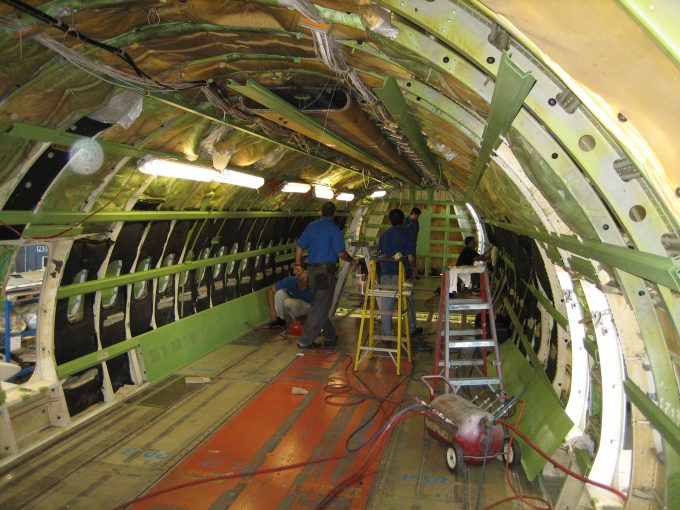Starlux Airlines raises $293m in IPO and aims to build freighter fleet
Starlux Airlines, the airline founded by ousted Evergreen scion Chang Kuo-wei, was listed on the ...
FDX: ABOUT USPS PRIVATISATIONFDX: CCO VIEWFDX: LOWER GUIDANCE FDX: DISRUPTING AIR FREIGHTFDX: FOCUS ON KEY VERTICALFDX: LTL OUTLOOKGXO: NEW LOW LINE: NEW LOW FDX: INDUSTRIAL WOESFDX: HEALTH CHECKFDX: TRADING UPDATEWMT: GREEN WOESFDX: FREIGHT BREAK-UPFDX: WAITING FOR THE SPINHON: BREAK-UP ALLUREDSV: BREACHING SUPPORTVW: BOLT-ON DEALAMZN: TOP PICK
FDX: ABOUT USPS PRIVATISATIONFDX: CCO VIEWFDX: LOWER GUIDANCE FDX: DISRUPTING AIR FREIGHTFDX: FOCUS ON KEY VERTICALFDX: LTL OUTLOOKGXO: NEW LOW LINE: NEW LOW FDX: INDUSTRIAL WOESFDX: HEALTH CHECKFDX: TRADING UPDATEWMT: GREEN WOESFDX: FREIGHT BREAK-UPFDX: WAITING FOR THE SPINHON: BREAK-UP ALLUREDSV: BREACHING SUPPORTVW: BOLT-ON DEALAMZN: TOP PICK

The current rate of B737-800 conversions needs close monitoring, with a potential oversupply that could impact lease rates for other narrowbodies, according to aviation advisory firm IBA.
Cargo conversion activity is settling down following the surge in demand for cargo capacity during the pandemic and is expected to normalise this year, an IBA cargo webinar revealed this week.
B737-800s continue to see unprecedented demand, with 27 already converted this year and 79 in 2023. However, IBA analyst Jonathan McDonald has noted a potential oversupply.
He said: “All these -800s are being converted and it’s now a bit challenging to place them.”
In the past three years, some 240 narrowbodies have undergone conversion and Mr McDonald feels some reality has to set in.
“To have 79 737-800s converted last year is an unusual spike in terms of activity,” he said, adding that, notably, -800 conversion lines were still opening, and indicative of continued demand.
“If more lines are being opened, there will be more conversions, but ultimately, 79 aircraft are a lot in one year,” he said. “That is half the 737-400 freighter fleet alone – there’s only so much demand out there for aircraft.”
No classic 737-300s have been converted lately and several are being retired. One example is China, where operators are opting for the capacity jump to the -800s. IBA suggests that 20 to 30 737-300s might still be on the market, but it’s unlikely they will be in the air again. However, some are still finding new homes, for instance, Airnesia Royal Cargo in Indonesia has reportedly acquired an Chinese-operated 737-300F as it awaits its AOC.
The 737-400s are still getting placed and six were converted last year, but operators will gradually shift to -800 freighters. Mr McDonald reckons demand is still out there and he noted that start-ups in the Philippines and Brazil had inaugurated -400s.
The A321-200 P2Fs are gaining momentum, albeit gradually. They will become more common as more feedstock becomes available. According to IBA data, 30 were converted last year and 12 this year, so far. Only four 320-200s have been converted since 2023. IBA has identified around 20 A321 conversions booked in by the end of 2024.
Activity on the B757-200s will undoubtedly slow down, and it appears there’s no rush for A321s to replace them either, at least to some degree.
Any potential A321 replacement for 757s will largely depend on the type of mission flown, as Mr McDonald explained: “Some 757 operators have mentioned that little extra tonnage capacity and range that is still unique in certain markets [where the A321 slightly falls short]. However, on a good chunk of routes where the full range is not utilised and maybe volume limited, there are potential replacement opportunities.”
Of course, other considerations, such as maintenance costs and fuel burn, will come into play. Currently, A321s are not uprooting 757s, but in the longer term, it is likely to happen.
Lease rates are showing downward trends across all the narrowbodies. The A321 peaked at over $250k a month in July 2019 to just less than $200k next month, and while a 21-year-old 737-800BCF fetched $200k in 2019, that is down to around $180k today. The 757-200P2F has the most stable decline, hovering just slightly below its $200k rate in 2019.
Mr McDonald has seen some 21-year-old -800s drop to less than $160k a month.
“I’m not saying that’s typical of a 737-800, but if they continue to convert them in numbers and it becomes challenging to base the aircraft, then you might see the lease rates slip even lower. But it’s definitely a comfortably sub-$200k airplane now, for a lease rate,” he said.
He warned that oversupply of -800s could also drag lease rates of other aircraft down with it. As for the 737-400s, lease rates will likely creep below $100k as it continues to be phased out.
Comment on this article